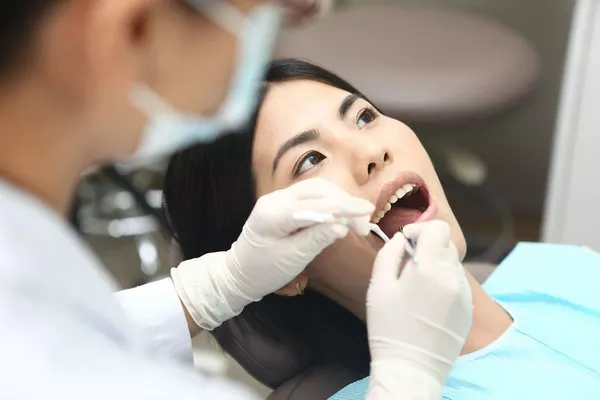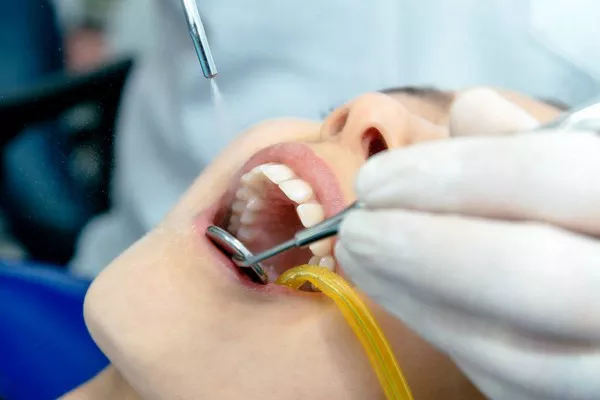Periodontitis is a common and serious gum disease that affects millions of people worldwide. It not only leads to the destruction of gum tissues but can also result in bone loss around the teeth. Understanding the causes of bone loss in periodontitis is crucial for maintaining oral health. Moreover, many individuals resort to unconventional methods like scraping their teeth with fingernails to alleviate discomfort. This article explores the multifaceted aspects of periodontitis, the underlying causes of bone loss, and the potential risks of using fingernails for dental care.
I. Periodontitis: A Silent Threat to Oral Health
Periodontitis is a progressive and inflammatory gum disease that begins with gingivitis, characterized by red, swollen, and bleeding gums. If left untreated, gingivitis can advance to periodontitis, causing more severe damage to the structures supporting teeth, including the bone. The following factors contribute to the development of periodontitis:
Plaque Buildup: The primary culprit behind periodontitis is dental plaque, a sticky film of bacteria that forms on teeth. When plaque accumulates and hardens into tartar, it becomes difficult to remove through regular brushing and flossing, leading to gum inflammation.
Poor Oral Hygiene: Inadequate oral hygiene practices, such as irregular brushing and neglecting flossing, provide the ideal environment for plaque and tartar buildup. This increases the risk of periodontitis.
Smoking and Tobacco Use: Smoking and tobacco use weaken the immune system’s response to gum infections, making smokers more susceptible to periodontal disease. These habits also restrict blood flow to the gums, hindering the healing process.
Genetics: Some individuals may be genetically predisposed to periodontitis. Certain genetic variations can make the immune system less effective in fighting gum infections.
Health Conditions: Conditions like diabetes and certain autoimmune disorders can increase the risk of developing periodontitis due to impaired immune responses and reduced blood flow to the gums.
II. The Mechanics of Bone Loss in Periodontitis
Bone loss in periodontitis occurs as a result of the body’s immune response to the infection in the gums. When harmful bacteria in plaque and tartar reach the gum tissue, the body’s defense mechanisms are activated, leading to inflammation. Over time, this inflammation can extend deeper into the supporting structures of the teeth, including the alveolar bone that holds the teeth in place. Here’s how it happens:
Inflammation: The body releases inflammatory substances to combat the infection. These substances cause blood vessels to dilate and become more permeable, allowing immune cells to reach the site of infection.
Immune Response: White blood cells, known as neutrophils and macrophages, are recruited to the infected area to eliminate bacteria. However, the immune response can also harm healthy tissues, including the bone.
Destruction of Connective Tissues: As the immune system battles the infection, enzymes released during this process can break down the connective tissues that hold teeth in place, including the periodontal ligament.
Bone Resorption: In an attempt to eliminate the infection, the immune system can produce molecules called cytokines, which stimulate the activity of osteoclasts. Osteoclasts are cells responsible for bone resorption, leading to the gradual loss of the alveolar bone.
As bone loss progresses, it weakens the support system for teeth, making them more prone to mobility and, eventually, tooth loss. The severity of bone loss can vary from mild to severe, depending on the individual’s overall health, oral hygiene practices, and how promptly they seek treatment.
III. The Dangers of Scraping Teeth with Fingernails
In an attempt to alleviate discomfort associated with periodontitis or remove plaque and tartar, some individuals resort to scraping their teeth with their fingernails. While this may provide temporary relief or satisfaction, it can have serious consequences for oral health. Here are some reasons why scraping teeth with fingernails is a harmful practice:
Damage to Enamel: Fingernails are not designed for dental care and can be quite abrasive. Scratching the enamel with fingernails can lead to enamel erosion, making teeth more vulnerable to decay and sensitivity.
Irritation of Gums: Scraping teeth with fingernails can cause gum irritation, redness, and even bleeding. This can exacerbate existing gum problems, including periodontitis.
Risk of Infection: Fingernails can harbor harmful bacteria, and scraping teeth with dirty or unclean nails can introduce additional bacteria into the mouth, increasing the risk of infection.
Ineffectiveness: Fingernails lack the precision and effectiveness of dental tools used by professionals. While scraping may remove some visibleplaque, it is unlikely to address the underlying issues causing periodontitis or remove tartar.
Potential for Injury: Vigorous scraping with fingernails can lead to accidental injury to the gums or soft tissues in the mouth, causing pain and further complications.
No Long-Term Benefits: Scraping teeth with fingernails provides no long-term solution to gum disease or tartar removal. Professional dental cleanings and proper oral hygiene practices are essential for managing periodontitis.
IV. Managing Periodontitis and Preventing Bone Loss
To effectively manage periodontitis and prevent further bone loss, it is essential to follow a comprehensive approach to oral care:
Professional Dental Care: Regular visits to a dentist or periodontist are crucial for monitoring and treating gum disease. Professional cleanings and scaling and root planing procedures can remove tartar and bacteria from below the gumline.
Oral Hygiene: Brush teeth at least twice a day with fluoride toothpaste and a soft-bristle brush. Floss daily to remove plaque and food particles from between teeth.
Antibacterial Mouthwash: Use an antibacterial mouthwash recommended by your dentist to help control bacterial growth in the mouth.
Lifestyle Modifications: Quit smoking and avoid tobacco products, as they significantly increase the risk of periodontitis.
Dietary Choices: Consume a balanced diet rich in fruits and vegetables while minimizing sugary and acidic foods and beverages.
Stress Management: High stress levels can weaken the immune system, so consider stress-reduction techniques such as meditation or yoga.
Regular Check-ups: Maintain regular dental check-ups to monitor the progression of gum disease and assess bone loss.
Conclusion
Periodontitis is a serious condition that can lead to bone loss, compromising the stability of teeth. Understanding the causes and risk factors associated with this condition is essential for effective prevention and management. While scraping teeth with fingernails may seem like a quick fix, it poses potential risks and is not a substitute for professional dental care. Instead, individuals should prioritize regular dental check-ups, professional cleanings, and proper oral hygiene to maintain their oral health and prevent further bone loss in periodontitis. Remember, your oral health is an integral part of your overall well-being, and it’s worth the investment in professional care and good oral hygiene practices.
Related Topics:






























